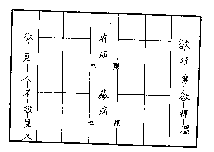Chills and Fever  Apart from confirming the presence of
chills and fever, we need to ask such questions as which is more severe, when
they occur and what symptoms and signs accompany them, for this information is
necessary for further differentiation of syndromes
Apart from confirming the presence of
chills and fever, we need to ask such questions as which is more severe, when
they occur and what symptoms and signs accompany them, for this information is
necessary for further differentiation of syndromes
-
Chills accompanied by fever.
Simultaneous occurrence of chills and fever at the beginning of the disease
indicates exogenous exterior syndrome. It is the manifestation of invasion
of the body surface by the pathogenic factor and its contending with the
antipathogenic qi. Exterior syndromes resulting from exposure to pathogenic
wind cold usually manifest as severe chills and mild fever with the
accompanying symptoms and signs such as absence of sweating, headache and
general aching, and a superficial, and tense pulse. Exterior syndromes due
to invasion by pathogenic wind heat are characterized by mild chills and
severe fever ; the patient also reveals thirst, sweating and a superficial
and rapid pulse.
-
Alternate chills and fever. The
patient may notice alternate attacks of chills and fever. This is the
representative symptom of intermediate syndromes. The patient may also
complain of a bitter taste in the mouth, thirst and fullness and stuffiness
in the chest and hypochondrium. High fever following chills occurring at a
definite time of the day suggests malaria.
-
Fever without chills. Fever may
occur without chills. Persistent high fever with aversion to heat instead
suggests interior heat syndromes of excess type due to transmission of the
pathogenic factors from the exterior to the interior with excessive heat in
the interior. The accompanying symptoms and signs are profuse sweating,
severe thirst and a surging pulse. If fever occurs or becomes worse at a
fixed hour of the day just like the sea waves, it is known as tidal fever.
Tidal fever in the afternoon or evening, accompanied by night sweating and a
red tongue with little moisture indicates deficiency of yin ; afternoon fever
with constipation and fullness and pain in the abdomen suggests excess heat
of the Yangming Meridian.
-
Chills without fever. The
subjective feeling of chills without fever indicates interior cold syndrome
of deficiency type. The patient may also have chilled appearance, cold limbs
and a deep, slow and weak pulse.
|
